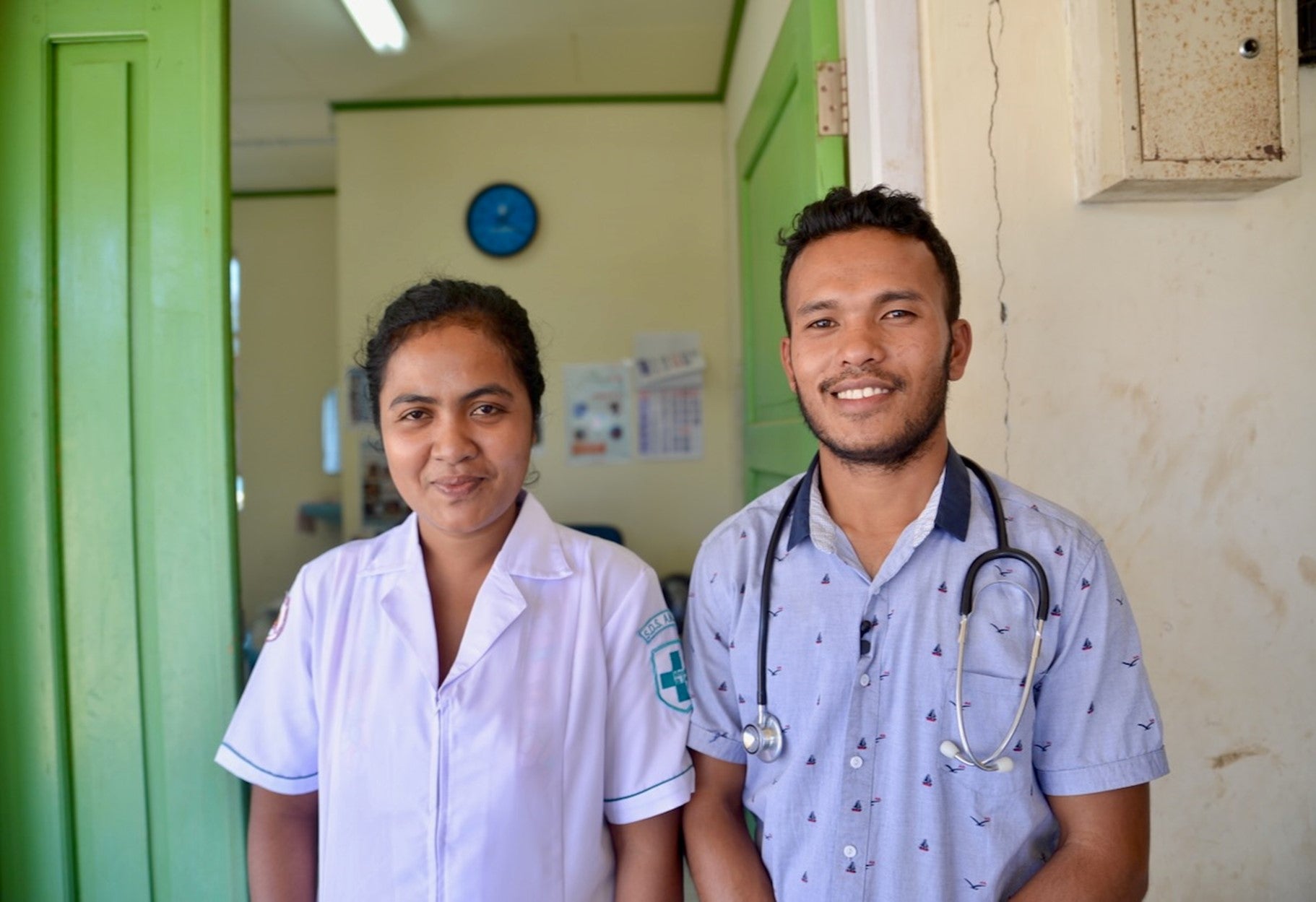 A drone can quickly fly essential supplies over land and water in an emergency or when natural disasters damage normal transport routes. ©World Bank
A drone can quickly fly essential supplies over land and water in an emergency or when natural disasters damage normal transport routes. ©World Bank
As tropical cyclone Seroja battered Timor-Leste on April 4, 2021, torrential rain poured down across the country. Dili, the capital, recorded 342 millimeters of rainfall in just 24 hours — almost ten times more than any other day during the wet season. The cyclone damaged critical infrastructure in all 13 municipalities. Roads and bridges were flooded and washed away, fresh water supplies were interrupted, health facilities were damaged, and much needed medical supplies were inaccessible to people who desperately needed them.
Seroja’s impact on health services highlights a significant and ongoing challenge. How can Timor-Leste’s health system be strengthened so vital services are consistently available to everyone across the country, no matter how hard it might be to reach them? Increasingly, in addition to expanding the network of resilient, accessible facilities with well-trained staff and robust supply chains, a compelling answer is drones.
A Challenging Supply Chain
Timor-Leste's health service delivery relies on a challenging supply chain. Almost 70% of the population of 1.34 million people live in rural areas, often hours from the nearest health center. Timor-Leste is also a particularly mountainous nation. The central mountain range rises some 3,000 meters and around 44% of country has a slope of 40% or more. Compounding this are the impacts of climate change. The World Bank’s Climate Risk Country Profile for Timor-Leste finds the nation is extremely vulnerable to natural hazards, and at high risk of cyclones, earthquakes, and tsunamis. Rural communities are often cut off during emergencies because roads are the primary avenue of transport. These disruptions disproportionately impact vulnerable groups, including women, children, and the poor who account for 47% of the rural population.
Drones can improve health service delivery
A recently completed feasibility study — Drone Innovation; Supporting Health Emergency Preparedness and Response in Timor-Leste — demonstrates that un-crewed aircraft can address many supply chain difficulties and improve the accessibility of health service delivery. It finds that drones can overcome unsafe or impossible travel conditions for ground vehicles day or night, following natural disasters, and even during adverse weather conditions. Drones can carry essential medicines, micro-nutrients, blood products, vaccines, diagnostic samples, and other small payloads while maintaining a cold chain if needed. They also need much less infrastructure support than conventional crewed aircraft and their application is becoming more feasible and significantly less costly as technology evolves.
Vice-Minister for Hospital Operationalization, Dr. Flávio Brandão Mendes de Araujo, PGDA, MMed, agrees that drones will transform the way healthcare is delivered in remote rural villages, with innovative drone technology being able to overcome geographical barriers and provide vital medical supplies to sukus (villages) and aldeia’s (hamlets) that are sometimes inaccessible, especially during the wet season. “The benefits are immense — faster response times, reduced transportation costs, and most importantly, saving lives. Drones will enable us to reach those in need with urgency and efficiency, ensuring that no one is left behind in receiving life-saving medical care,” he says.
Innovative Health Reform
The report lays the foundation for planning and implementing a safe, efficient, and scalable drone logistics system for Timor-Leste’s health sector. It covers the business case, ecosystem, and regulatory readiness for introducing drones and was produced as part of the Government’s Health Emergency Preparedness and Response Program, with support coming from the World Bank’s Health Emergency Preparedness and Response (HEPR) Program, the Australian Department of Foreign Affairs and Trade, and Resolve to Save Lives. The next step is to work closely with the government as it moves into the pilot stage. Vice-Minister Brandão sees the possibility for real impact: “The potential of drones in healthcare delivery is limitless, and we are committed to harnessing this technology to create a healthier and more equitable future for all Timorese people.”
This initiative is an excellent example of how technology can be used in practical ways to reach the underserved and to bring more value, while overcoming climate challenges. It is a key theme of the World Bank’s new flagship report, Digital-in-Health: Unlocking the Value for Everyone.
With another Timorese wet season drawing closer, the prospect of drones enabling more equitable access to health care in any kind of weather is a positive one. The ability to fly over difficult terrain and significantly boost the speed of delivery, makes them an attractive solution for strengthening service provision and supplementing existing health supply chains in hard-to-reach locations. Imagine a surgeon at a referral hospital ordering a fresh supply of blood — and it arrives within the hour. Lifesaving.




Join the Conversation